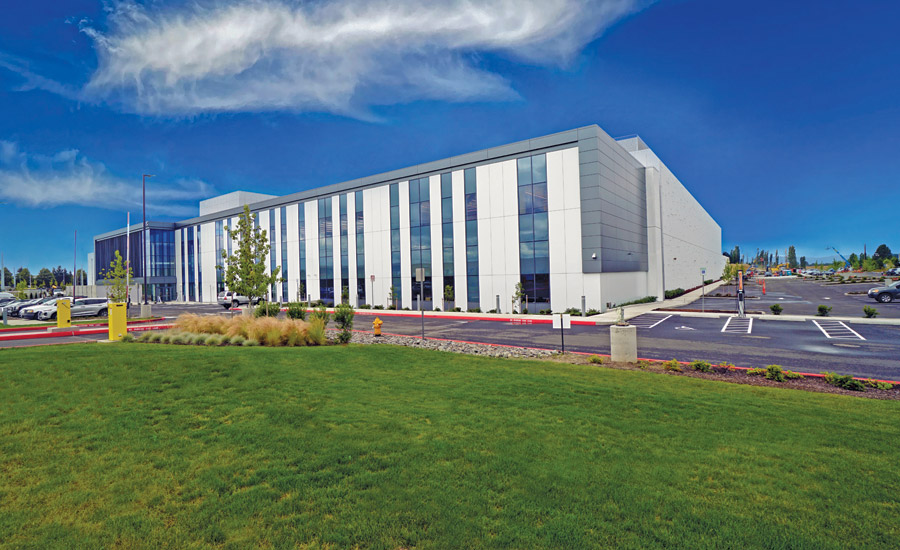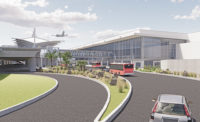California and the Northwest’s top contractors reported steady gains in regional revenue in 2020—despite setbacks due to COVID-19 and the year’s unprecedented wildfires—thanks to solid backlogs and continued strength in the government and multifamily sectors.
Looking ahead, contractors expect continued growth, with climate change and the resulting wildfires driving sustainable building practices, although supply and labor shortages will continue to be a challenge in both regions.
Each year, ENR compiles regional revenue data from contractors: ENR California’s region includes California and Hawaii, while ENR Northwest’s includes Alaska, Oregon and Washington.
|
Related Links |
Concord, Calif., based Swinerton topped ENR California’s list with 2020 regional revenue of $3.1 billion, up 3% from the firm’s 2019 revenue of $3 billion. This marks the eighth consecutive year the firm has ranked first on California’s list. In the Northwest, Swinerton posted 2020 regional revenue of $570.7 million, up 5% from $543.3 million, moving it to ninth place, up from 10th a year earlier.
Eric Foster, Swinerton chief executive, says year-to-date sales in 2021 are “very good,” and he expects a revenue increase in 2022. While 2020 saw several large projects canceled, the renewable energy market remained strong as did multifamily, health care, education and the interior finish and renovation sectors—all of which offer strong opportunities in 2021.
Foster notes that mass timber is a fast-growing market sector as it continues to gain popularity and momentum with the adoption of new codes for mass-timber buildings. Swinerton’s mass timber business Timberlab, based in Portland, Ore., has posted robust 2021 sales, which Foster expects to grow.
“Better sustainable building practices will be a huge trend moving forward,” he says, noting that renewable energy, mass timber, public-private partnerships, health care and affordable housing are seeing continued strength in California and the Northwest. “Recent heat waves, wildfires and drought in the Western states have proven that we have no time to delay. We must build buildings that release less carbon.”
“Recent heat waves, wildfires and drought in the Western states have proven that we have no time to delay. We must build buildings that release less carbon.”
— Eric Foster, CEO, Swinerton
Foster warns, though, that the cost and the lead times for building materials is a big challenge. “I believe it will settle down fairly quickly as the supply chain gets back to a more normal pace,” he says. “The construction industry has come back very strong after the pandemic, which will create a challenge with the availability of qualified labor to keep up with this demand.”
Dave Valentine, project development director of Hensel Phelps’s NorCal district, says that despite the pandemic, 2020 was surprisingly successful thanks to a solid 2019 backlog coupled with new project wins. Hensel Phelps ranked third on California’s list, up from sixth last year, with 2020 California revenue of $2.1 billion. That’s up 17% from $1.8 billion a year earlier. The Bellevue, Wash.-based firm earned the 12th spot on the Northwest rankings with regional revenue of $272.7 million.
“There truly was a positive aspect to the 2020 cloud,” says Valentine. “Our outlook for 2021 is very positive despite a very competitive marketplace—things have really begun to heat up.” Valentine sees the health care, life sciences, advanced technology and aviation and government building sectors on the rise.
“Supply chain challenges continue to plague the country, impacting material availability and cost,” he says. “Numerous items that have never been a challenge to secure are problematic. It’s the pandemic effect, with all the manufacturing having been impacted not only in the U.S. but abroad as well.”
Darin Stegemoller, senior vice president in JE Dunn Construction Group’s Portland office, leads the company’s Northwest division and says COVID-19’s extra safety measures, compounded with wildfire shutdowns, affected the contractor’s revenue, but specialty markets such as advanced industries and mission-critical offset the setbacks on health care projects.

Hensel Phelps is finishing the 10th & O Street Office Building in Sacramento for the state of California.
Image courtesy Hensel Phelps
Stegemoller expects 2021 Northwest division revenue of more than $400 million as both Portland and Seattle are experiencing elevated levels of construction.
JE Dunn moved up to the 10th spot on the Northwest list, from 13th last year, with 2020 regional revenue of $398.9 million, up from $230.9 million in 2019.
“We are seeing a continued rise in design-build and P3 as delivery methods,” says Stegemoller. “Building owners are looking at office buildings and evaluating alternative tenant-type uses. There is a big growing demand in the behavioral health market as well as in critical infrastructure facilities.”
Meanwhile, market demand for advanced manufacturing is increasing opportunities for builders as they race to meet the need for chips for consumer products, says Stegemoller. But he warns that labor and materials shortages, already an issue prior to the start of the pandemic, could worsen throughout this year and next and threaten to increase project costs or delay operability of new facilities.
Santa Monica, Calif., based Morley Builders gained significant ground in the rankings, moving to California’s 26th spot, up from No. 38 the year earlier. Morley reported 2020 California revenue of $519.5 million, up from $378.7 million in 2019.
“During our 75-year history, we have faced and overcome many challenges, yet COVID-19 tested us in ways we had never experienced,” says Charlie Muttillo, president of Morley. He says his firm managed all projects for on-time completion and sees positive opportunities ahead, despite some escalation.
“Additionally, we see the demand for multifamily and affordable housing remaining strong as the market recalibrates,” he says.




